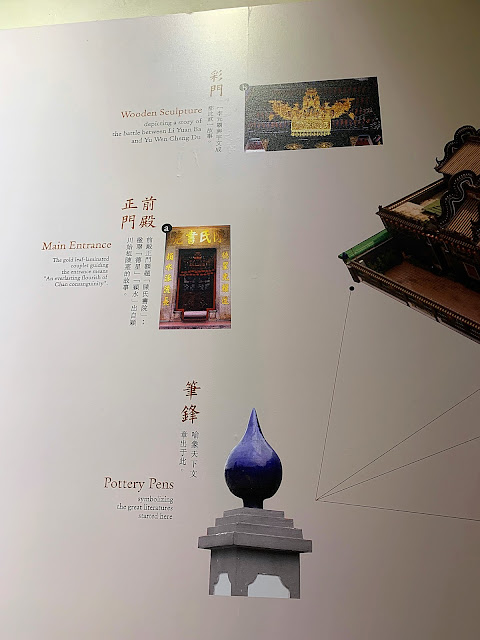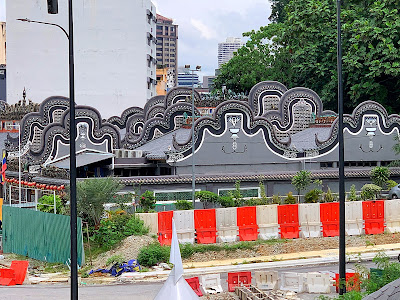Chan She Shu Yuen Clan Ancestral Hall
Jalan Petaling
Also known as the Green Temple
Built between 1897 and 1906, it was built for the Chan Clan, to welcome new immigrants from China.
Building materials and craftsmen came from Southern China back then. The building was actually a small replica of a Chan Ancestral Hall back in Xiguan, Guangzhou China.
This building has a family temple and 2 room of 'museums'; with lots of information about the migration of the Chan immigrants from China to Malaya and information about the architecture of the ancestral hall itself.
Look at the intricate carvings on the roof! Amazingggggggggggg work!


Founders of this ancestral hall
The First Stage
"Kuala Lumpur was thriving at the end of 19th century. At that time, Chan Sow Lin was a big and highly respected tin miner in the Chinese society. He once returned to his hometown to visit the Chan She Shu Yuen (Chan Ancestral Hall) in Xiguan, Guangzhou China. Chan was deeply impressed and the idea of emulate the Xiguan's building to Kuala Lumpur arose. This is the origin of Chan She Shu Yuen in Kuala Lumpur."
The Second Stage
"After Chan Sow Lin returned to Kuala Lumpur, he immediately made a clarion appeal, where Chin Sin Hee and Chin Choon responded positively. In 1896, he initiated the Selangor Chan She Shu Yuen Tomb, which was the prototype of the Clan Association. In 1897, the trio donated 7 shops lot land at the end of Petaling Street to build the Chan She Shu Yuen."
The Third Stage
"Completion of Chan She Shu Yuen has been prolonged for many times due to its massive construction, detail workmanship and fine carving. The 3 sages tried their best effort, yet the project stop due to exhausted of their resources. Later, Chan Choy Thim prayed to Chan She Shu Yuen's ancestors that if he could explore tin mining, he would contribute money in completing the building construction."
Guess his prayers were answered and he finished the project by the end of 1906.
"Chan She Shu Yuen took 10 years to complete. With exquisite craftsmanship, choice building material, this ornate and elegant palace-like architectural piece displays the splendor and significance of Chinese traditional art. Due to its fine blend of Chinese culture and great artistic value, the Government of Malaysia, through the National Cultural Heritage Act 2015, declared it as one of the historical cultural relics and a protected heritage building in 2016."
Ao Yu (middle statue of the roof) ~ symbolizing To Emerge as a Champion
Pottery Pen ~ symbolizing the great literatures started here
Wok Ears ~ a feature of the Lingnan architectural design. At the center of the gable, there are clay flower baskets sculptures and a bat mouthing copper coins underneath, symbolizing Blossoms of Prosperity, Abundance of Blessings.
Carp fish tail was assembled at the end of the gable, signifying vibrant energy of the community.


























































